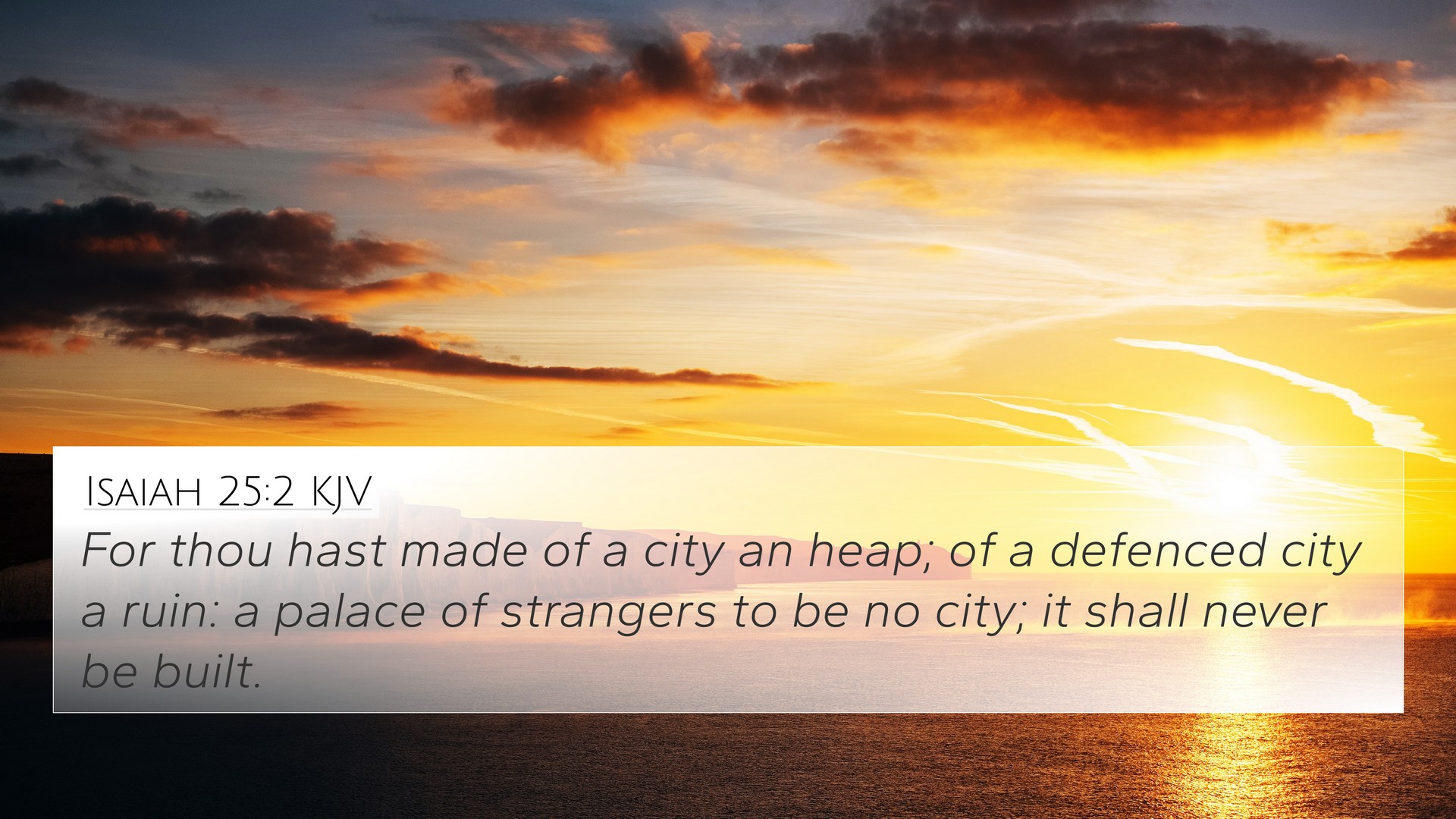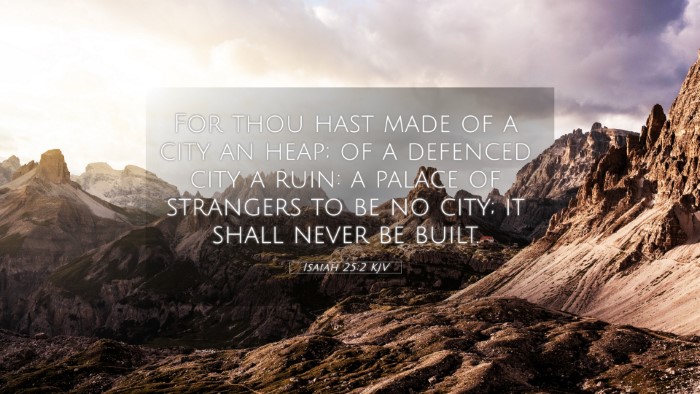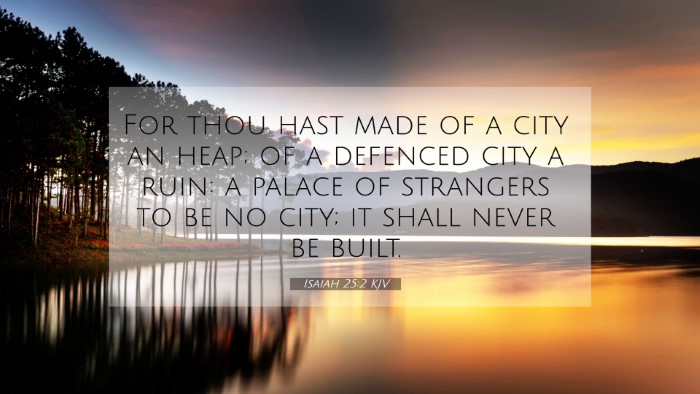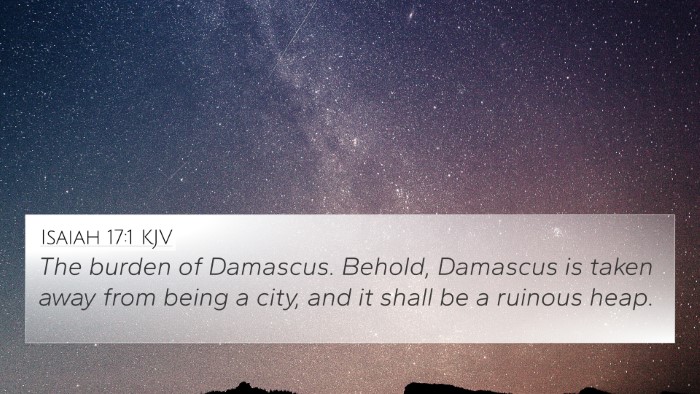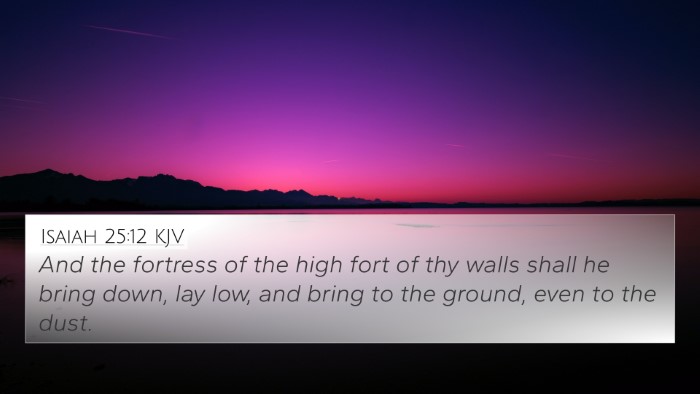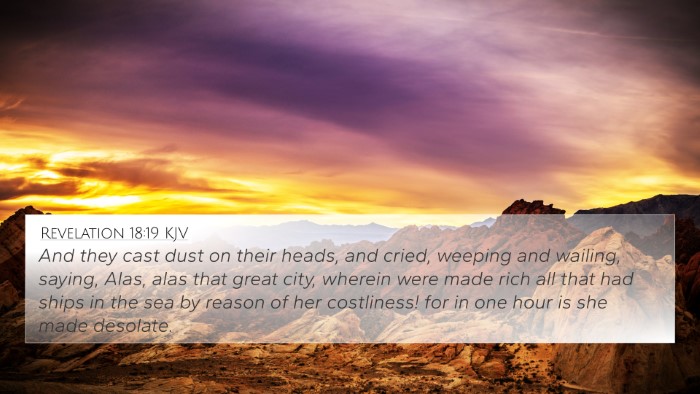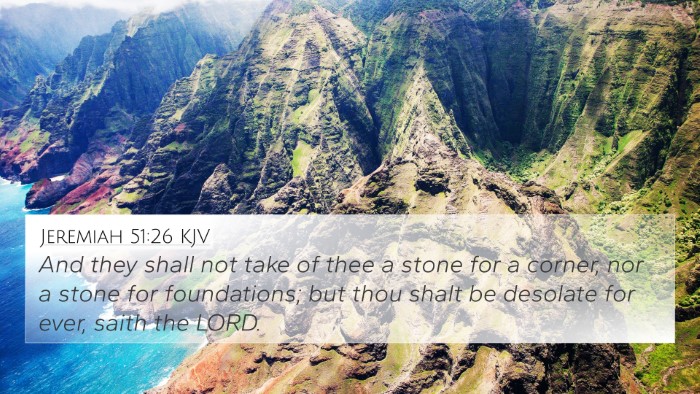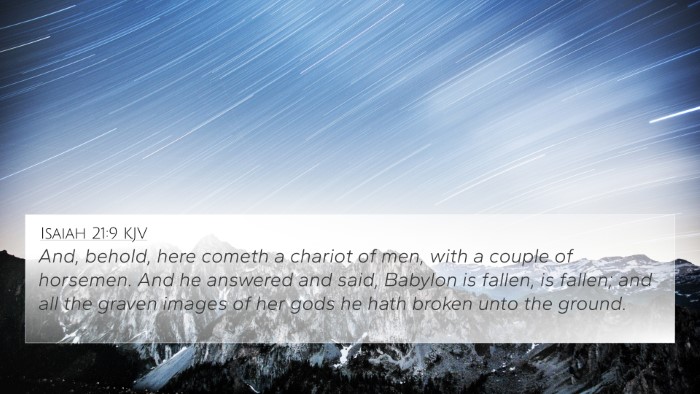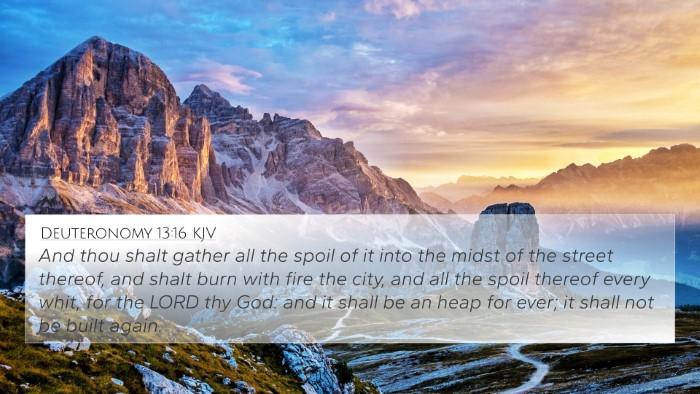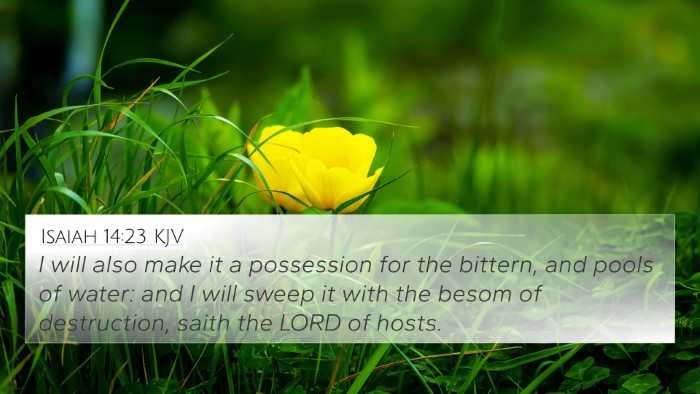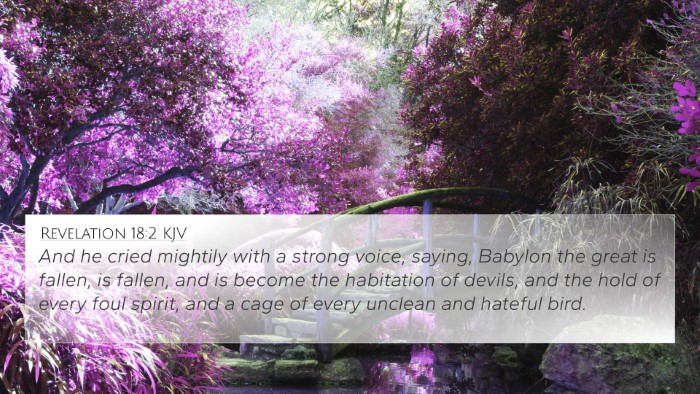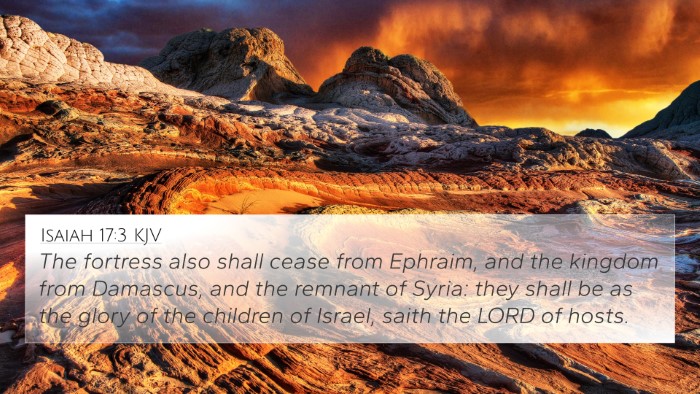Understanding Isaiah 25:2
Isaiah 25:2 is a profound verse that reflects the themes of God's sovereignty and the transformation of cities once marked by oppression and destruction into places of glory. This commentary seeks to provide an in-depth analysis from various public domain sources, summarizing insights from Matthew Henry, Albert Barnes, and Adam Clarke.
Verse Text
Isaiah 25:2 (KJV): "For thou hast made of a city an heap; of a defenseless city a ruin: a palace of strangers to be no city; it shall never be built."
Verse Meaning and Interpretation
Isaiah 25:2 contains a striking image of reversal and renewal. The verse concludes a broader prophetic vision which showcases God's ability to take places that have been devastated ("an heap") and transform them. The interpretation of this verse invites us to consider both historical contexts and its theological implications.
Key Insights
- Divine Judgment and Restoration: Matthew Henry emphasizes that this verse speaks to God's judgment on nations that defy Him and His power to bring forth a restoration that will affirm His glory.
- Contrast Between Human Effort and Divine Will: According to Albert Barnes, the verse highlights the futility of human efforts when standing against God's will. Cities will remain ruined if God has decreed it.
- Importance of Faith: Adam Clarke notes that the transformation of cities symbolizes the spiritual awakening and restoration of God's people. Faith is essential in seeing the reversals that God is capable of performing.
Cross-References and Thematic Connections
Isaiah 25:2 connects seamlessly with several other Biblical texts, providing a robust framework for understanding divine restoration narratives.
- Isaiah 1:26: "And I will restore thy judges as at the first, and thy counsellors as at the beginning..." - This verse reinforces the theme of restoration after judgment.
- Isaiah 60:15: "Whereas thou hast been forsaken and hated, so that no man went through thee, I will make thee an eternal excellency, a joy of many generations." - A promise of transformation from desolation to exaltation.
- Revelation 21:2: "And I John saw the holy city, new Jerusalem, coming down from God out of heaven..." - The ultimate fulfillment of God's intent to create beauty from ruins.
- Jeremiah 30:18: "Thus saith the Lord; Behold, I will bring again the captivity of Jacob's tents..." - Indicates God's intent to restore His people's fortunes.
- Ezekiel 36:33: "Thus saith the Lord GOD; In the day that I shall have cleansed you from all your iniquities I will also cause you to dwell in the cities..." - A clear indication of the promise to rebuild and restore.
- Matthew 21:42: "Jesus saith unto them, Did ye never read in the scriptures, The stone which the builders rejected, the same is become the head of the corner?" - Jesus references restoration and the shift in God's plan.
- 2 Corinthians 5:17: "Therefore if any man be in Christ, he is a new creature: old things are passed away; behold, all things are become new." - Reflects personal transformation akin to city restoration.
Applying Context to Understanding
The significance of linking these scriptures not only enhances our understanding of Isaiah 25:2 but facilitates a comparative Bible verse analysis across the prophecies and their fulfillments throughout both the Old and New Testaments. The connections underscore God's continuity of purpose throughout scripture.
Tools and Methodologies for Effective Cross-Referencing
For those interested in delving deeper, applying tools for Bible cross-referencing is fundamental. Utilizing a Bible concordance, either in print or digital format, allows for comprehensive Bible cross-reference materials and aids in identifying thematic connections between verses.
Cross-Referencing Bible Study Methods
- Utilize a Bible Cross-Reference Guide: Tools like this can help to locate verses that share similar themes or concepts.
- Engage in Comparative Studies: Examining how different texts within the Bible relate to one another enhances understanding nuanced themes, such as restoration, redemption, and divine sovereignty.
- Linking Biblical Texts: Establish a system for tracing themes through various sections of scripture—this can enhance your personal study or sermon preparation.
Conclusion
Isaiah 25:2 serves as a powerful reminder of God’s capability to make something beautiful out of desolation. The connections made with other scripture passages redefine our understanding of God’s redemptive power. As we explore these inter-Biblical dialogues, we realize the unity and coherence of the Biblical narrative and the hope offered through Christ.
In summary, using cross-references not only enriches our understanding of individual verses, but it also creates a tapestry of theological truths, revealing the complexities of divine intention and historical narratives that shape our faith today.
